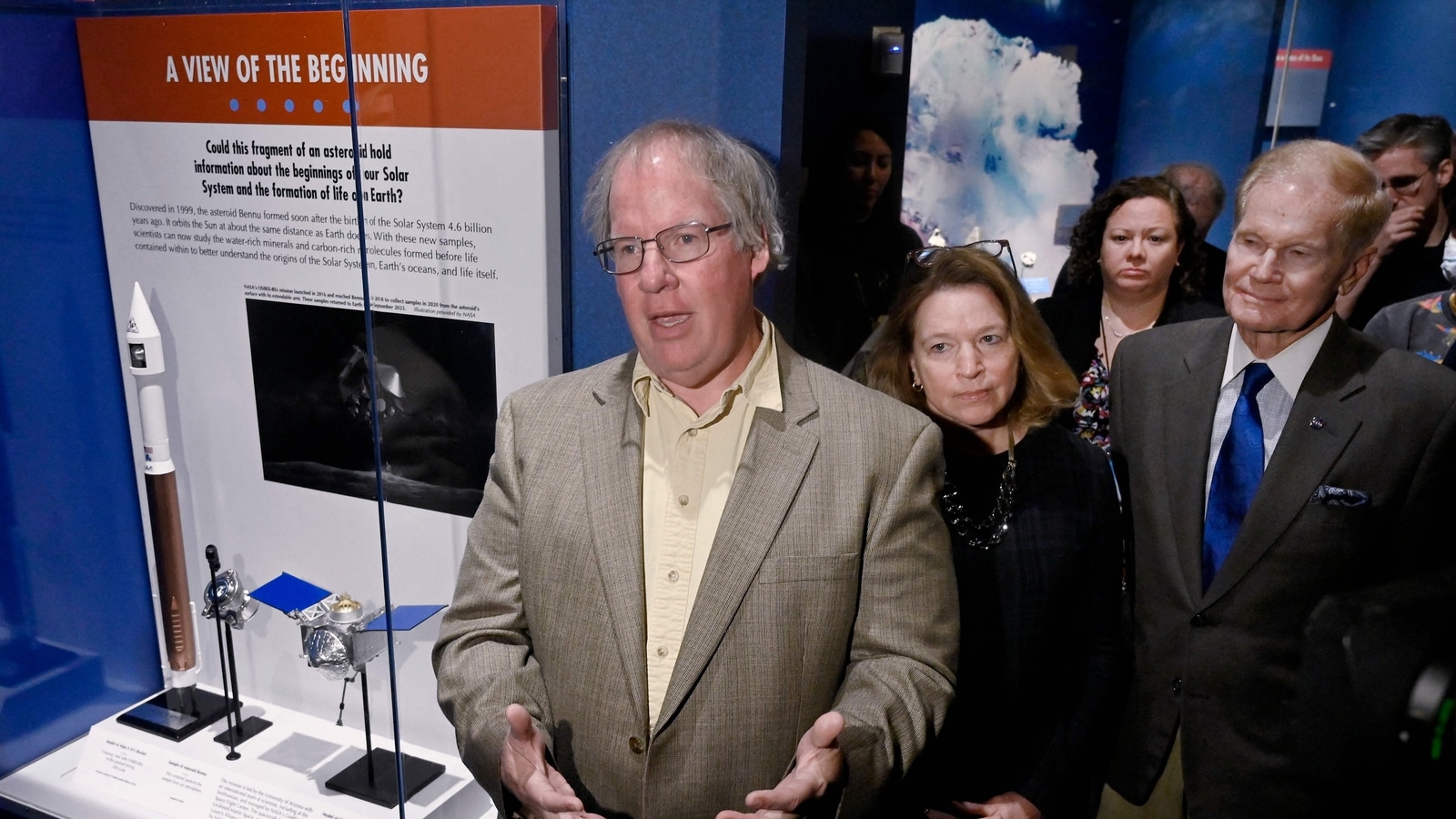NASA's OSIRIS-REx asteroid Bennu sample unveiled at the Smithsonian museum
A small piece of asteroid Bennu will now rest in the Smithsonian's National Museum of Natural History. NASA’s OSIRIS-REx spacecraft brought the sample to Earth recently.

In September, NASA reached a unique milestone when its ambitious project, the OSIRIS-REx mission, was completed successfully. The spacecraft traveled 6.2 billion kilometers to meet an asteroid named Bennu in deep space, collected samples, and then delivered them to the Earth. These samples, collected for the first time ever by humanity, are expected to answer some of the biggest questions around the origin of the Earth, the life of the planet, and the solar system itself. And now, a small piece of this sample has been placed in the iconic Smithsonian's Museum of Natural History so that people can come and appreciate the historic feat.
According to a report by Payload Space, the asteroid sample was unveiled at the museum on Friday. The unveiling was a ceremonious occasion as the rock was placed in the meteorite gallery of the museum. Bennu has been given an enclosure of its own, where it sits in a stainless steel container, surrounded by the OSIRIS-REx spacecraft and the Atlas V rocket.
Bennu asteroid placed in Smithsonian museum
The claim that these asteroid samples might unlock the mysteries of life's beginnings on Earth isn't merely hype. Researchers have explained that the carbon molecules in these samples are fundamental to the evolution of life, and studying them can reveal how life could have emerged on Earth. This asteroid is believed to be cut from the same fabric that formed our solar system, and has remained untouched by space. In a way, it is a pristine piece of rock that can show us exactly how the world was billions of years ago.
"In the four and a half, five billion years of evolution of this solar system, the 13.8 billion years of the evolution of the universe and its billions of galaxies, each having billions of stars, these things run into one another, and some gas clouds form and spit out stars. Then, all of this is colliding with each other…Ultimately, we have a remnant of that. It's all part of our quest to try to understand who we are; where we are in the vastness of this Earth," NASA Administrator Bill Nelson said during the event, reported Space.com.
OSIRIS-REx wasn't the first probe to meet with an asteroid and bring back samples for study. Japan succeeded in the feat twice, returning celestial dust in 2010 and 2020. But the amount collected, an estimated 250 grams, dwarfs that returned by the Japanese missions, with Hayabusa2 managing only 5.4 grams.
Catch all the Latest Tech News, Mobile News, Laptop News, Gaming news, Wearables News , How To News, also keep up with us on Whatsapp channel,Twitter, Facebook, Google News, and Instagram. For our latest videos, subscribe to our YouTube channel.





























